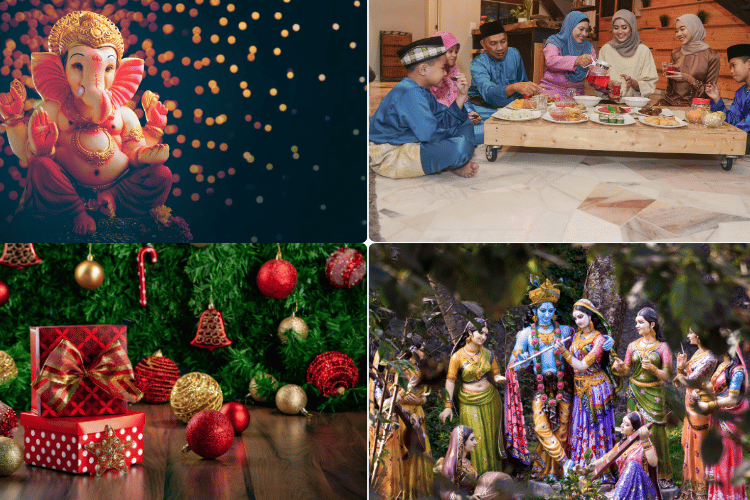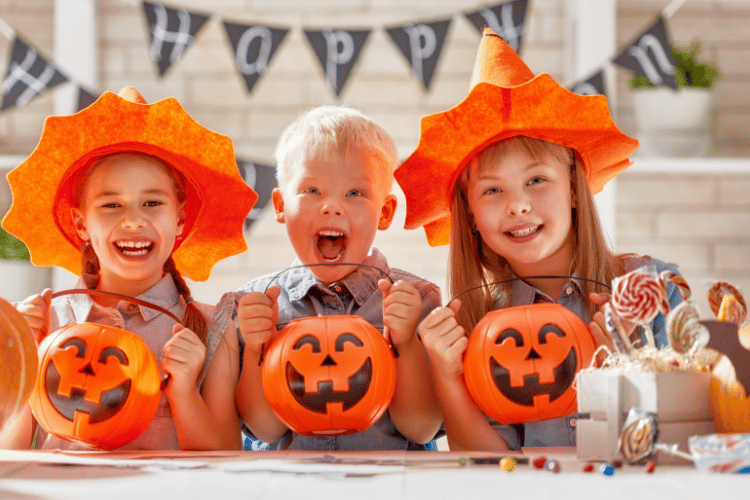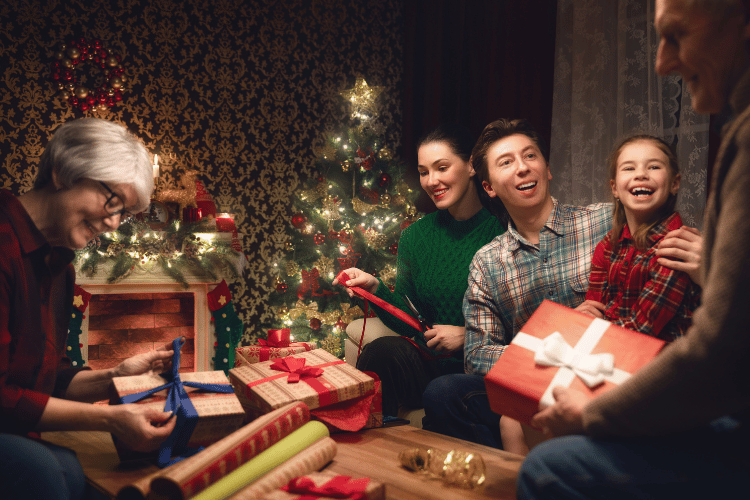
Christmas is a cherished festival that unites millions of people together by hearts. This globally celebrated holiday is more than just hosting themed parties, baking authentic cookies, sipping festive cocktails, enjoying food traditions, or visiting Christmas villages. But if you look closely, every country has its own way of celebration.
While Santa Claus, snowmen, and Christmas trees are the symbols of the season, enjoying hot porridges in Finland and using spider decorations in Ukraine are the pinnacles of celebration. To put it simply, Christmas won’t be the same without a few time-honored traditions.
If you’ve ever wondered how families around the world spend this magical time, these 10 popular Christmas traditions, from lively to chaotic, will spruce up your brain. So hold onto your sleigh and ride through these classic customs that make the season more beautiful!
- KFC, Japan
- Krampus Parade, Austria
- Yule Goat, Sweden
- Brooms and Mops, Norway
- Roller Skating, Venezuela
- Yule Lads, Iceland
- Giant Lantern Festival, Philippines
- Hiding Christmas Pickle, Germany
- Spider Web Decoration, Ukraine
- Wigilia, Poland
- Bonus- Night of the Radishes, Mexico
- Bonus- Tossing the Shoes, Czech Republic
1. KFC, Japan:
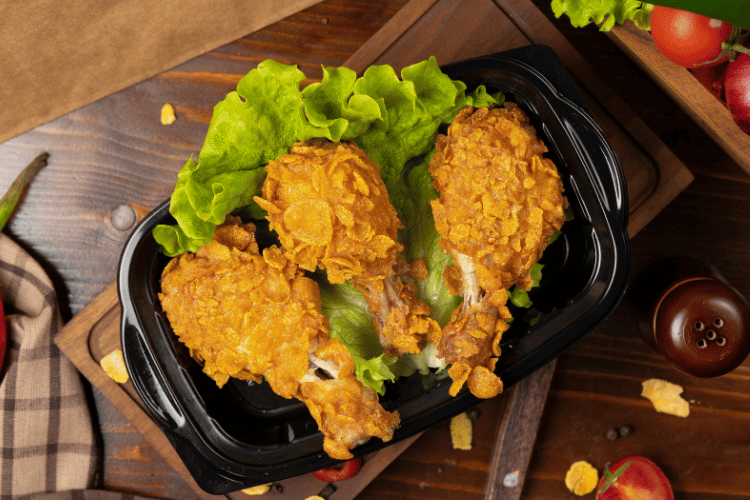
While the rest of the world feasts on turkey, surprisingly, eating a bucket of Colonel Sanders’s crunchy chicken has now become a Japanese tradition. But why do people follow this new tradition? All credit goes to the American Kentucky Fried Chicken’s brilliant marketing campaign, Kurisumasu ni wa Kentakkii, in 1974.
This campaign, which translates to “Kentucky for Christmas,” advertised their chicken as the traditional Japanese festive meal. The idea was so successful that Christmas Eve is now KFC’s busiest day every year with the highest sales.
People order their “party barrel” months ahead to skip the long pickup queues and to never miss the custom. Additionally, you will see statues of Colonel Sanders dressed as Santa outside local shops and engage in the majestic Odaiba Rainbow Fireworks. Who would have thought a fast-food restaurant with its festive feasting could top the list of Christmas traditions!
2. Krampus Parade, Austria:
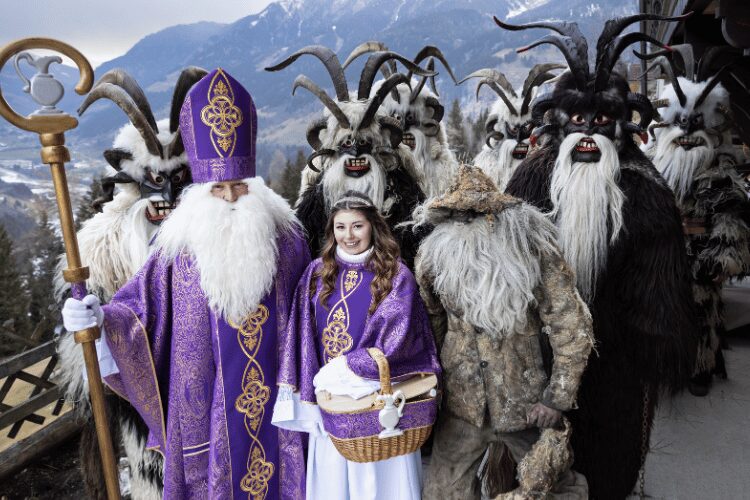
The renowned “Krampuslauf” celebration in Austria is a must-mention in the top 10 Christmas traditions. Legend has it that Saint Nicholas’s evil companion, the half-goat and half-demon Krampus, punishes trouble-causing kids.
Every year on December 5th, St. Nicholas Eve, young men wearing horrific costumes with beast horns and claws. While St. Nicholas rewards nice children with sweets and presents, the cruel Krampus parade the streets with wicker baskets, looking for naughty kids to hit with sticks or take away in a sack.
In a world full of merry celebration, this spine-chilling tradition is not your typical holiday festivity. Hey, to be frank, it brings out the best in everyone!
3. Yule Goat, Sweden:
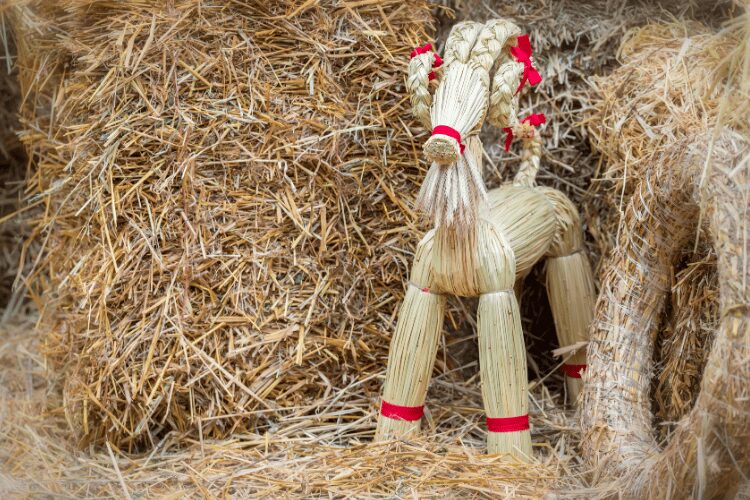
While reindeer are linked to Christmas all around the world, Sweden has a unique version. Being one of the oldest traditions, the Yule Goat, or Julbock, has been the symbol of Christmas in Scandinavia. Based on folklore, St. Nicholas delivered gifts in the 11th century using man-sized goats in place of his sleigh.
Its roots are also speculated to be from Thor, the thunder deity of Norse mythology, whose chariot was drawn by two goats. Annually, Gävle town features a massive Yule goat crafted with straws and ribbons. It stands 42 feet in height, 23 feet in width, and weighs more than 3 tons.
Unfortunately, since 1966, the artwork has been burnt more than 30 times by vandals. Nowadays, this peculiar custom of Yule goats is installed as holiday decoration in the backyard and can be found on Christmas trees.
Some additional traditions include:
- The unique tradition from the 1960s is to tune in to “Kalle Anka och hans vänner önskar God Jul,” translating to “Donald Duck and his friends wish you a Merry Christmas.” This was the time when televisions were new and had only two channels, one of which was Disney cartoons. Families in Sweden still convene sharply at 3 p.m. to watch the Donald Duck show.
- On December 13, Luciadagen, also known as Saint Lucy’s Day, is observed. The oldest daughter of every household serves food for her family while wearing a white frock and a nine-candled crown. Further, kids in various costumes stroll with candles while singing festive carols. This custom pays tribute to Lucia, who gave food to those in need by lighting her path with a crown-like wreath made of candles.
4. Brooms and Mops, Norway:
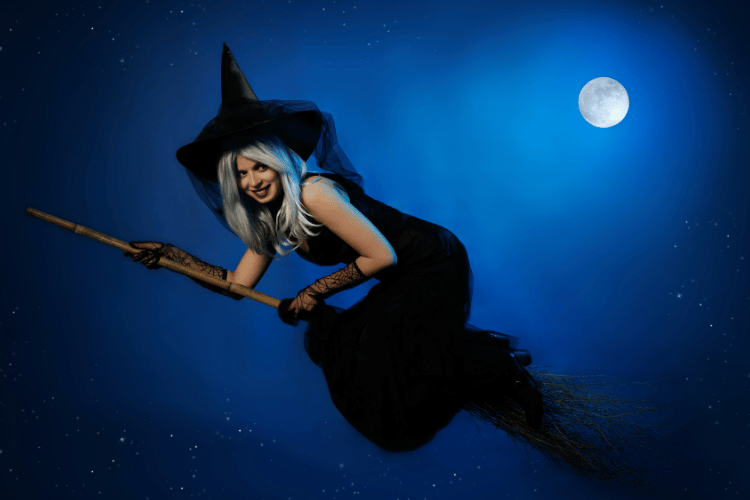
When it comes to Christmas traditions, some are weird yet undeniably fun! In order to fend off witches and evil spirits, it is a festive custom in Norway to hide mops and brooms on holiday. But why do Norwegians practice this quirky Christmas tradition?
Legend states that on Christmas Eve, witches and bad spirits descend to Earth in search of any sweeping sticks to go for an exciting sky-ride. So, to stop them from using it, people hid their cleaning objects before going to bed.
People continue to adhere to this custom despite its centuries-old origins. In order to prevent witches from entering through chimneys, some people even burn wood in the fireplace.
Other holiday traditions are,
- Riskrem, a classic rice pudding with berry sauce is served and the person who finds the almond buried inside will be gifted presents.
- In Norway, families celebrate “Little Christmas Eve” on December 23. Each family has its own customs, such as adorning the Christmas tree, baking cookies, and munching “Kransekake,” a ring cake made of almond dough.
5. Roller Skating, Venezuela:

Forget about sleigh rides and mistletoe; these Christmas traditions around the world are hitting a different chord! In Venezuela, people are roller skating to church mass, while you are probably twirling around a nearby playground. A holy skater!
So head over to Venezuela’s capital, Caracas, to watch the lively skating events. Beginning on December 16th, native people skate to a plaza to attend the early morning Christmas liturgy, “Misa de Aguinaldo.” Due to the popularity of this jubilant tradition, stretching back to the 1960s, the city’s roads remain closed until 8 a.m. for the safety of participants.
It’s even claimed that kids sleep with one skate lace attached to their toes and the other hanging out the window, so their buddies can give it a pull and let them know it’s time to skate.
6. Yule Lads, Iceland:
Among the Christmas customs, the Icelandic Yule Lads ceremony is particularly noteworthy! Despite their reputation as troublemakers in fables, 13 different Yule Lads, or jólasveinarnir, makes a visit to children for thirteen nights preceding Christmas. Before heading to bed, kids are encouraged to leave their finest shoes by their window.
Depending on who is on the naughty or well-behaved list, the tiny guys leave gifts. The following day, children are welcomed with shoes full of presents and sweets if they behaved well and rotting potatoes if they are less angelic. Yule Lads with distinctive personalities and unusual names, like Door-Slammer and Spoon-Licker, add a playful and festive vibe to the Christmas celebrations.
Families exchange new books with loved ones and then enjoy a relaxing evening by the fireplace, munching on treats and reading. Legend has it that a big Yule cat roams the farm; if you did your job well, you will be rewarded with new apparel; if not, the beast will devour you. To keep yourself safe, it is mandatory to purchase new attires.
7. Giant Lantern Festival, Philippines:
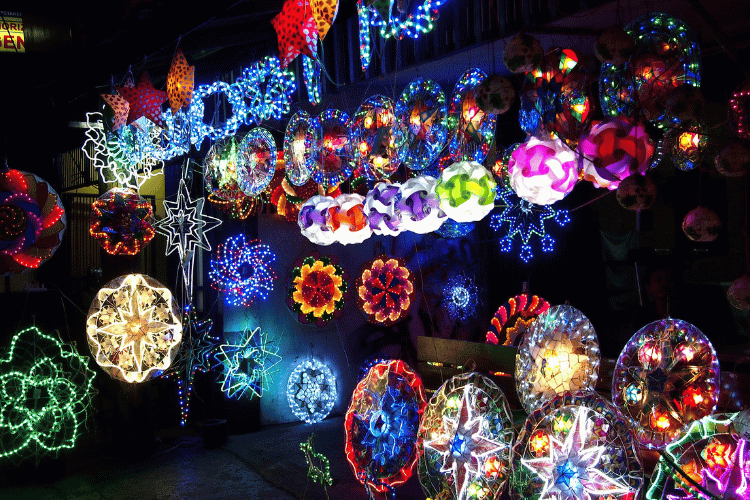
What do you get when you mix Christmas with a dazzling light show? The Giant Lantern Festival, “Ligligan Parul,” in the Philippines! San Fernando has the most extravagant Christmas festivities in the world. Every year, on the Saturday before Christmas Eve, it hosts a gigantic lantern festival representing culture, tradition, unity, and hope.
Around 11 villages of the city compete by creating the most exquisite and detailed paper lanterns. They began with little, simple lanterns designed from bamboo or Japanese origami paper and were lit by candles. As time went on, this Christmas tradition started showcasing complex, massive designs and vivid hues with a variety of materials, including wood, glass, and plastic.
Interestingly, kaleidoscope-patterned lanterns lit by electric bulbs have risen to a height of six meters (20 feet). Although they adorn homes, schools, and shops in a variety of shapes, the five-pointed star is the traditional.
The celebration has become so well-known that the city has earned the nickname “The Christmas Capital of the Philippines.” Who said Christmas lights need to be tiny and subtle when you have this quintessential custom?
8. Hiding Christmas Pickle, Germany:
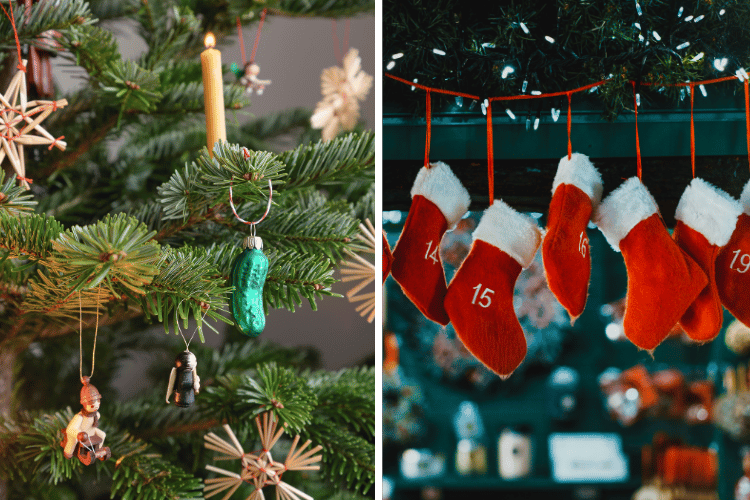
Have you heard about Germany’s clever trick of adding some pickle-flavored fun? Yes, the pickle ornament! In this quirky tradition, families place a glass pickle decoration in the Christmas tree. The first kid to identify it on Christmas Day wins a special reward or gets to unwrap the very first present.
It’s like a holiday pickle scavenger hunt! This 1800s German custom is believed to be from America, when ornaments shaped like fruits and vegetables were imported. There is a legend that this tradition honors an US Civil War trooper who survived by consuming a pickle on the night of Christmas.
Another version says it came from Spain, where St. Nicholas saved two young boys from a pickle barrel. Hanging Advent Calendars, a day-counting tradition, were practiced. By drawing chalk lines on the wall and wiping out the past days, the 19th-century people kept track of the number of days till Christmas.
Soon after, it resulted in an extensive production of Advent paper calendars, which were further enhanced with chocolates. Giant advent calendars are standard nowadays, giving Christmas a playful twist.
9. Spider Web Decoration, Ukraine:
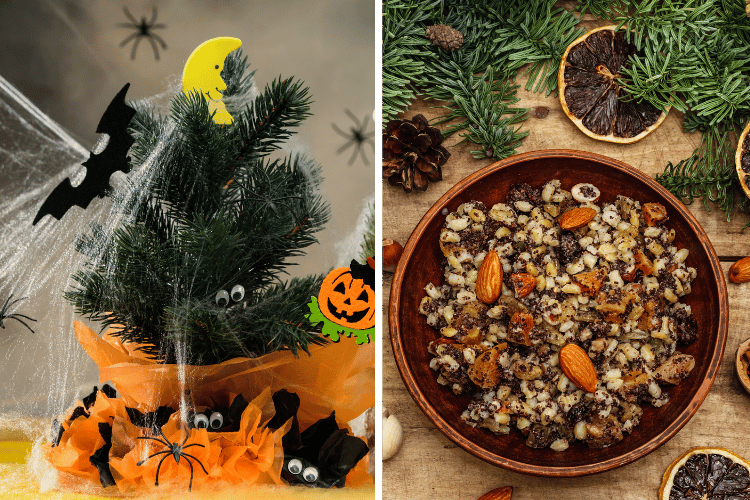
How many of you know that arachnids could be so joyous, bringing good luck and wealth? While the world decorates with baubles, candies, and fairy lights, Ukrainians use spiders and web decorations to bring their own fortune. Yes, there’s a tangled web Christmas tradition that began decades ago.
Legend has it that a widow and her children lived in such poverty that she was unable to afford ornaments for the Christmas tree. In order to cheer up her kids, she decked the tree with fruits and nuts. However, the spiders in her home felt sorry for her and adorned it with their cobweb, which on Christmas morning turned into glistening silver and gold.
According to another tale, a poor family noticed a tree growing within their house, which eventually got covered in glowing spider webs. It’s also claimed that you’re lucky if you find real spider webs in your trees. If you plan to incorporate this custom, never leave these eerie mocktail recipes, costume ideas, and party foods.
On January 7, Orthodox Christians celebrate Christmas and feast on the wheat-based kutya meal. Families participate in this custom by tossing a spoonful of Kutya toward the roof; if it clings, they believe that there will be a bountiful harvest in the upcoming year. As a result, it is clear that Christmas in Ukraine starts off with the question, “Is there a spider web?”
10. Wigilia, Poland :
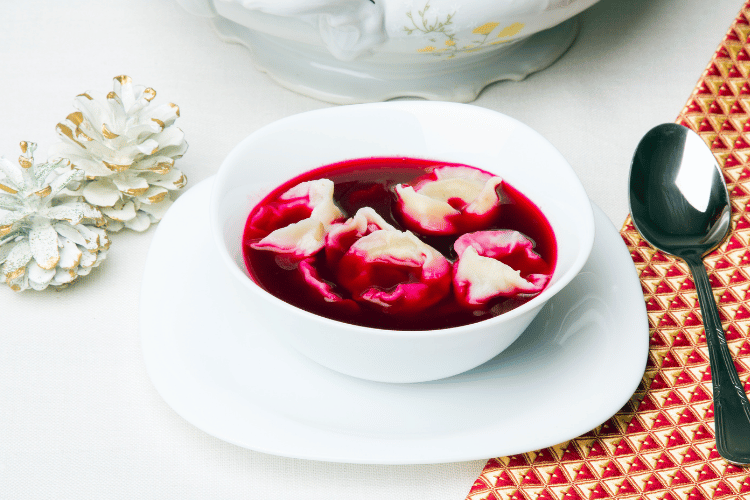
In Poland, wigilia is the highlight of Christmas celebrations. Here, Christmas Eve tradition includes a special meal of 12 meatless foods implying the 12 months and the 12 Jesus Christ’s disciples.
This timeless custom starts only after receiving approval from the sky. The youngest in the family should look for the first star in the evening sky. Once they see it, everyone gathers around the table to have dinner and finish their fasting.
Amongst several tasty foods served at the banquet are carp, pierogi, poppy seed cake, and oplatek, which is a wafer that each member will break off wishing a Merry Christmas. Also, there is an extra seat reserved for unexpected visitors. To pay respect to the star of Bethlehem, the gifts are cracked open after the star sighting.
11. Bonus- Night of the Radishes, Mexico:
The “Night of Radishes,” or “Noche de Rábanos” in Mexico, is an intriguing event where beautiful radish sculptures steal the eyes. Oaxaca City hosts a vegetable carving competition on the morning of December 23rd, drawing both novices and experts.
For a fair contest, natural scenes, beasts, buildings, and even copies of da Vinci’s artwork are carved in the government-grown radishes. In 1897, this Christmas custom was officially announced as a competition, and the artwork will be put on market exhibition.
Decades ago, two monks found a huge quantity of untouched crops. The custom eventually began when they brought the peculiar, gigantic radishes to the market.
Notable holiday traditions comprise:
- The story tells that when a girl knelt down to offer her only grass bouquet to baby Jesus, it blossomed into bright red flowers. Ever since then, Poinsettias, referred to as Flores de Noche Buena, or Flowers of the Holy Night, have been shared with loved ones.
- Las Posadas is a religious Christmas marching tradition in Mexico celebrating Mary and Joseph’s journey. During this x-mas event, people wear costumes made of poinsettia flowers or vibrant hues and parade through the streets.
- On December 24, traditional dishes like corn-dough tamales, authentic pozole soup, and tiny doughnut buñuelos were savored.
12. Bonus- Tossing the Shoes, Czech Republic:
Are you curious about your romantic destiny? Head straight to the Czech Republic! In this country, young, single women stand with their backs facing the door and throw their shoes behind.
If the toe points in the direction of the door, the woman will be married the subsequent year; if the heel points, she will be a bachelor for another year. Regardless of the result, it surely adds extra fun to the Christmas occasion.
Others purchase live fish weeks prior to the big day and put them in their bathing tubs. When the feast time arrives, it will either be on the dinner plates or thrown into the river.
To wrap it up:
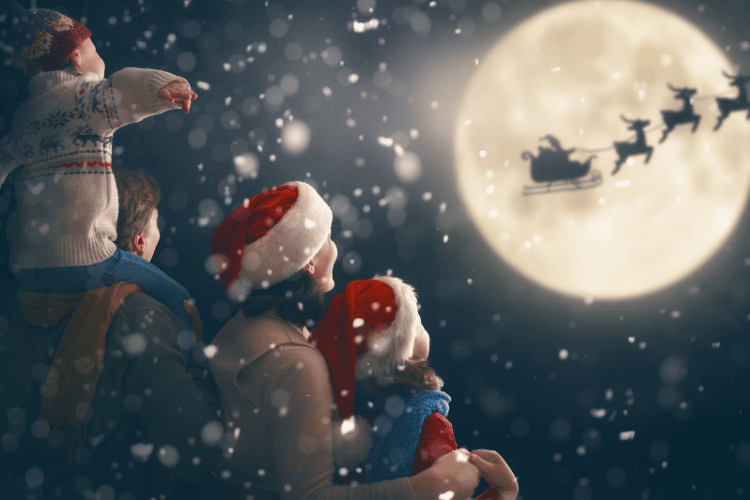
To sum up, there are countless Christmas customs around the world that enhance the beauty of the holiday. Whether it’s burning the devil in Guatemala, welcoming the New Year with magnificent fireworks in El Salvador, or lighting tiny candles in Colombia, every tradition carries its own special significance and story.
And don’t miss the chance to steal a kiss from your partner in England. For a fun twist, spare some time to craft your own advent calendars in Switzerland. Now it’s your turn to sprinkle some magic on your festive season.
Do you have any interesting, weird, or quirky Christmas celebrations? We can’t wait to hear about them!
Joyous holiday to you and your fam!


